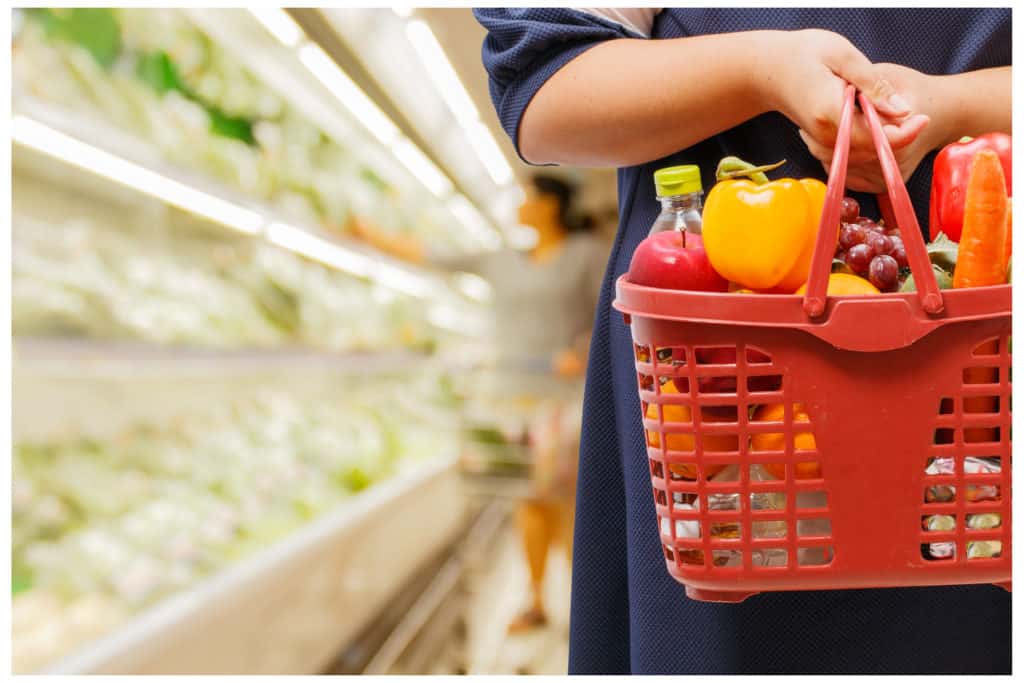Growth in online grocery sales worldwide is far outpacing overall online grocery sales, a new report finds.
Total worldwide sales of fast-moving consumer goods—called FMCGs, which include processed foods, soft drinks and toiletries that sell quickly and at relatively low cost—grew just 1.6% in the 12 months ended in June 2016, according to the report from Kantar Worldpanel. However, online sales of such goods grew by 15% during the yearlong period and now account for 4.4% of the market—or $48 billion. By 2025, Kantar Worldpanel projects grocery e-commerce will grow to 9% of the market and be worth $150 billion worldwide.
“With new entrants such as Amazon expanding rapidly, the industry is facing a shake-up,” says Stéphane Roger, global shopper and retail director at Kantar Worldpanel.
The Kantar Worldpanel research further supports conclusions reported in Internet Retailer’s first-ever 2016 Online Food Report, which finds that online grocery sales in the United States alone are expected to jump 157% in 2016.
According to the Kantar report, online grocery shopping is steadily growing on a global basis but unevenly by region, with the variance showing little correlation to levels of internet connectivity. In mature economies such as the United States and Germany, and in emerging markets such as Brazil, the e-commerce share of the market remains small.
Kantar Worldwide found that South Korea, where online sales account for 16.6% of the FMCG market, leads the way in digital penetration of grocery sales. Other top markets, as measured by the estimated e-commerce share of the FMCG market, are:
- Japan, 7.2%
- United Kingdom, 6.9%
- France, 5.3%
- Taiwan, 5.2%
- China, 4.2%
- Czech Republic, 2.1%
- Spain, 1.7%
- Netherlands, 1.7%
- United States, 1.4%
Kantar Worldpanel said its research shows that “the FMCG e-commerce market is unkind to latecomers,” and the report urges brands to “get on the shopping list” before consumer habits become entrenched. Kantar Worldpanel data shows that 55% of online grocery shoppers repeatedly buy the same brands from the same merchants from one purchase to the next.
“Although online sales have the potential to cannibalize in-store sales, it is vital that retailers act quickly to develop a strong e-commerce presence,” Roger says. “The retailer that goes online first in each market can enjoy a far higher market share—this can be a difference of at least 40% in France and up to three times more in the U.K.”
Among the other observations in the report are:
- Online food shopping has been relatively slow to catch on in the United States largely because U.S. online shopping expectations have been set by Amazon.com Inc. Amazon has trained U.S. consumers to see online shopping as a way to buy individual items, instead of for buying baskets of goods on a regular basis.
- In many European markets, food retailers often introduced online shopping to consumers; in China, it was online marketplaces operated by Alibaba Group Holding Ltd. and JD.com Inc.
- Shoppers generally spend more per visit when grocery shopping online than they do during a trip to a physical store. In the U.K., for example, the average online purchase is $59 compared with $15 in-store.
In Asia, shopping festivals benefit online grocery retailers and brands. China’s Singles’ Day, an annual 24-hour shopping event held Nov. 11, has led to an increase in families trying the e-commerce channel for groceries to 49% in 2016, from 30% in 2013. - In South Korea, thanks to high internet speeds and 85% smartphone penetration, nearly 100% of consumers ages 10 to 40 shop online, many via mobile devices. In the next decade, South Korea is expected to the see online share of the FMCG market surge to 25%.
- In Latin America, online grocery shopping generates just $345 million in sales each year, and accounts for only 0.2% of the FMCG market.
- The e-commerce share of the U.K. grocery market is the third-largest globally and growing, though at a slower pace than in recent years. Growth, which had been 20% annually, has more recently declined to less than 10%.
- In the U.K. only 13% of households currently use mobile devices for online grocery shopping.
Kantar Worlpanel says its findings are based on tracking the purchases of more than 500,000 shoppers in key countries on three continents. The company uses panels of consumers in each country that record what they buy.
Internet Retailer’s first-ever 2016 Online Food Report documents how the online sale of food is suddenly a booming market in the United States and puts to rest the notion that food retailing is the exclusive province of stores. The 25-page research report, “Online Food Shopping Goes Mainstream,” identifies the major players driving this sea change in food retailing, estimates the future growth of the online food retailing and more. For more information about the report, visit this page.
Favorite